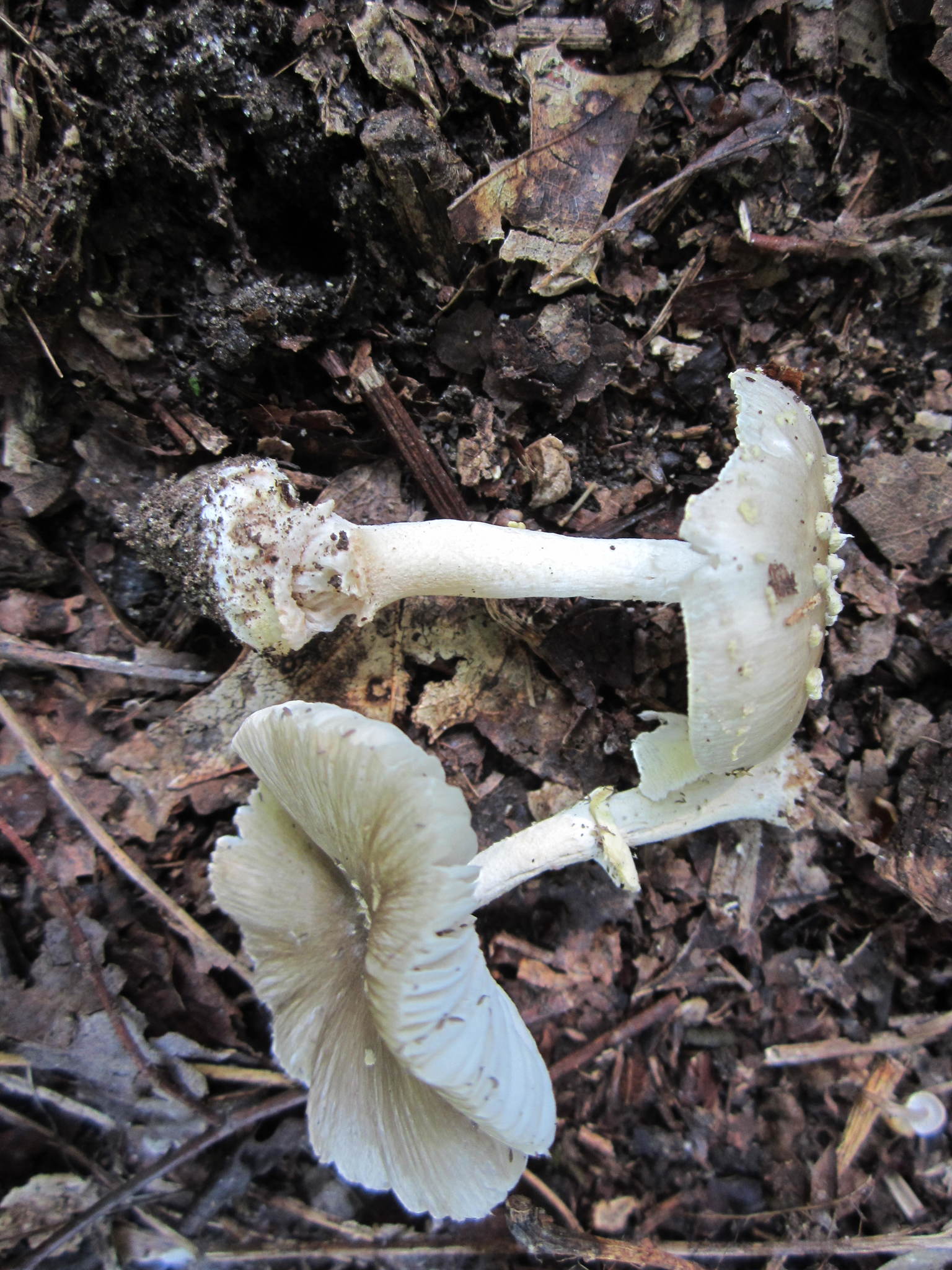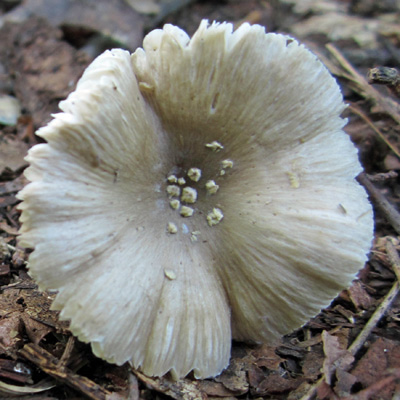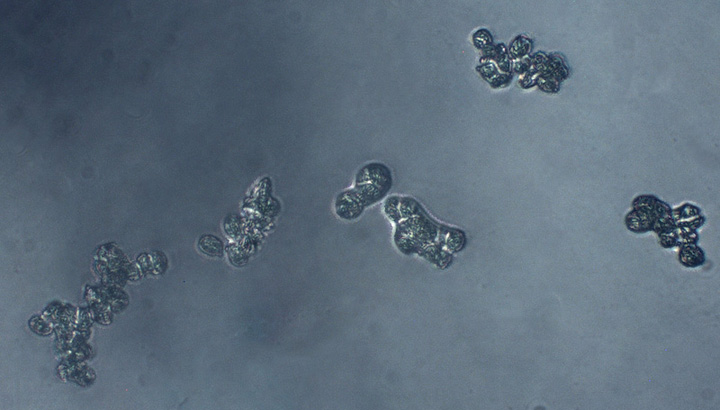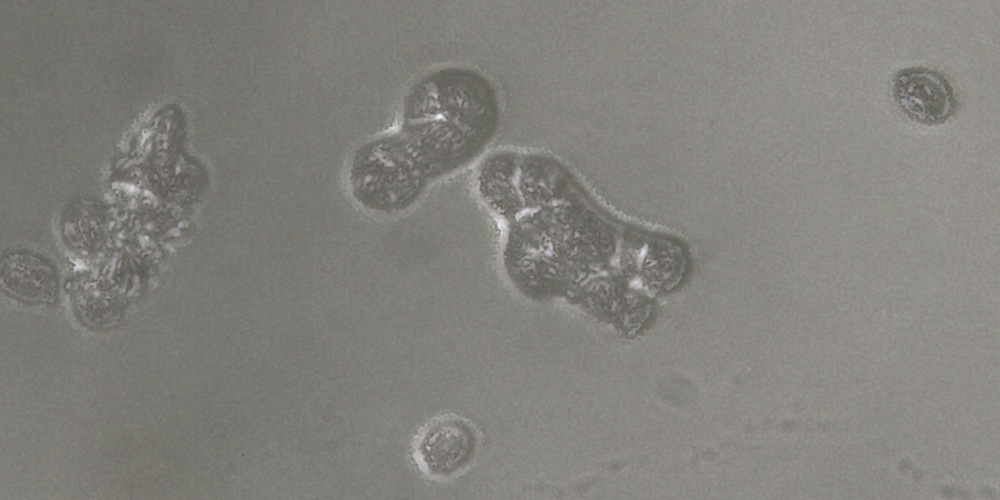Map Snapshot





12 Records
Status
Found scattered or in groups on ground in mixed forests.
Description
Cap: Gray-brown, convex (flatter in age), margin often lighter; covered with gray/grayish-white flocculose warts. Gills: White, crowded. Stalk: White, white ring, clavate/bulbous bulb with white/light gray hairs or fibrous/scaly volval remains (J. Solem, pers. comm.).
Seasonality Snapshot
Eating mushrooms can be dangerous. One should do so only with expert advice and great care. MBP accepts no liability for injury sustained in consuming fungi or other biodiversity. Use of media featured on Maryland Biodiversity Project is only permitted with express permission of the photographer.
Amanita excelsa in Howard Co., Maryland (8/2/2012). (c) Joanne and Robert Solem, some rights reserved (CC BY-NC).
View Record Details
Media by
Joanne Solem.
Amanita excelsa (cap) in Howard Co., Maryland (8/4/2012).
Media by
Joanne Solem.
Spores collected from an Amanita excelsa specimen in Howard Co., Maryland (8/4/2012). Nearly round/broadly elliptical, smooth; measured 8.9-11.0 X 7.0-9.4 microns.
Media by
Robert Solem.
Amanita excelsa in Howard Co., Maryland (8/2/2012). (c) Joanne and Robert Solem, some rights reserved (CC BY-NC).
View Record Details
Media by
Joanne Solem.
Source: Wikipedia
| Amanita excelsa | |
|---|---|
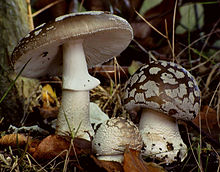
| |
| Scientific classification | |
| Domain: | Eukaryota |
| Kingdom: | Fungi |
| Division: | Basidiomycota |
| Class: | Agaricomycetes |
| Order: | Agaricales |
| Family: | Amanitaceae |
| Genus: | Amanita |
| Species: | A. excelsa
|
| Binomial name | |
| Amanita excelsa | |
| Synonyms | |
| |
| Amanita excelsa | |
|---|---|
| Cap is convex | |
| Hymenium is adnexed | |
| Edibility is inedible | |
Amanita excelsa, also known as the European false blushing amanita,[1] is a species of agaric fungus in the family Amanitaceae. It is found in Asia, Europe, and North America, where it grows in deciduous forests.[2]
Toxicity
[edit]Amanita excelsa var. alba is inedible.[3]
A. excelsa var. spissa is edible, but can easily be confused with the highly poisonous A. pantherina.[4]
References
[edit]- ^ "Standardized Common Names for Wild Species in Canada". National General Status Working Group. 2020.
- ^ Zhishu B, Zheng G, Taihui L (1993). The Macrofungus Flora of China's Guangdong Province. New York, New York: Columbia University Press. p. 268. ISBN 978-962-201-556-2.
- ^ Phillips, Roger (2010). Mushrooms and Other Fungi of North America. Buffalo, NY: Firefly Books. p. 27. ISBN 978-1-55407-651-2.
- ^ Miller Jr., Orson K.; Miller, Hope H. (2006). North American Mushrooms: A Field Guide to Edible and Inedible Fungi. Guilford, CN: FalconGuide. p. 40. ISBN 978-0-7627-3109-1.
